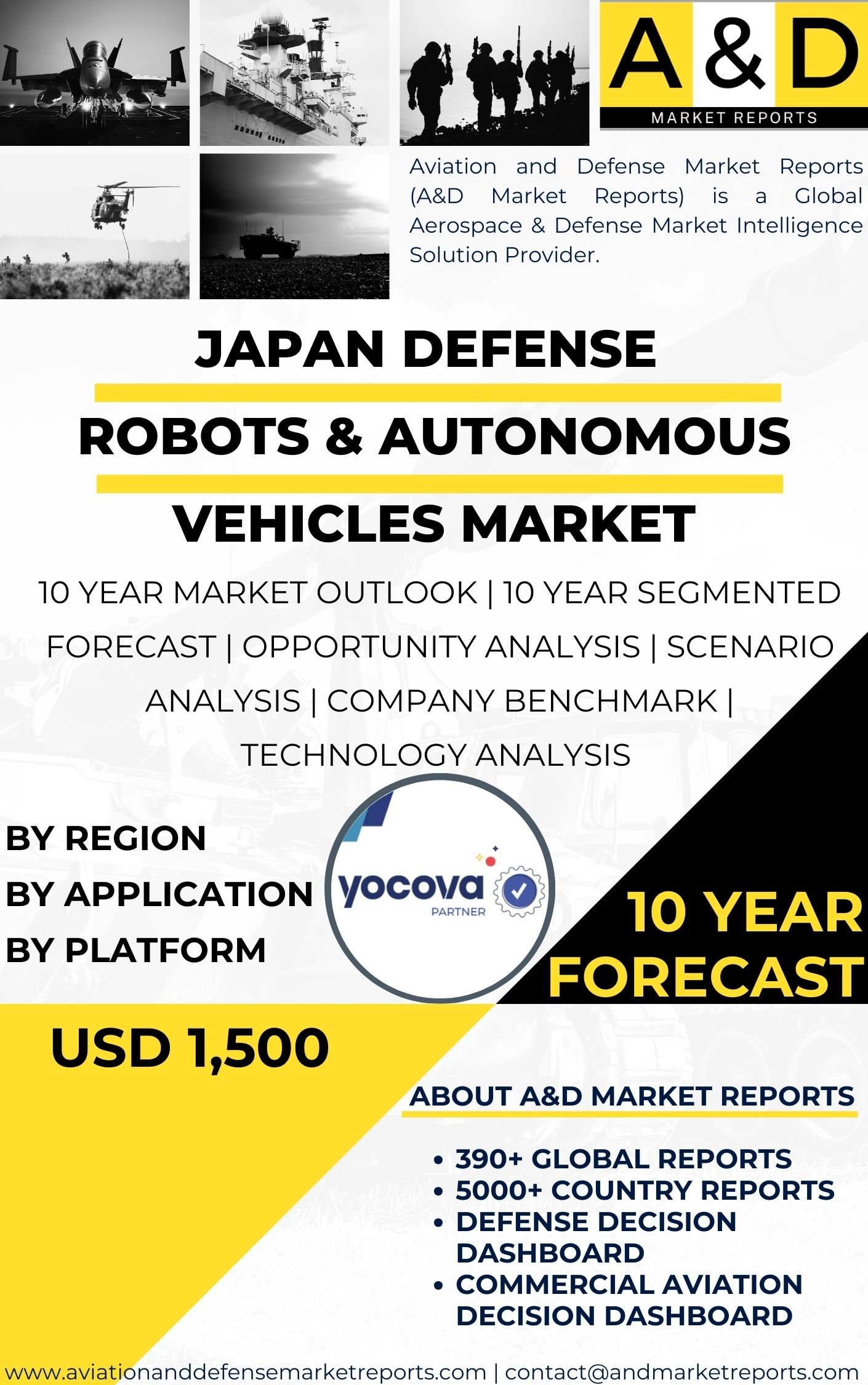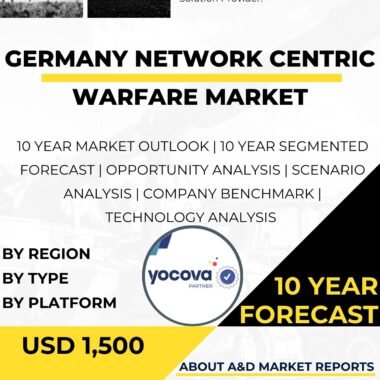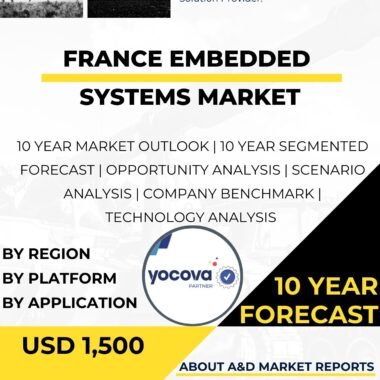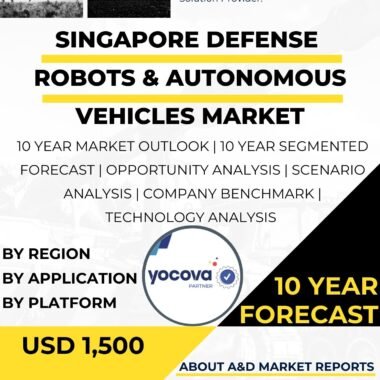Description
The defense robots and autonomous vehicles market in Japan has experienced significant growth and strategic importance in recent years, driven by the nation’s focus on enhancing its defense capabilities and addressing security challenges in the Indo-Pacific region. Robots and autonomous vehicles play a crucial role in various defense applications, including reconnaissance, surveillance, logistics support, and hazardous operations, reducing the risk to human personnel and enhancing the overall efficiency of military operations.
Japan’s defense forces, particularly the Japan Self-Defense Forces (JSDF), have recognized the potential of robots and autonomous vehicles in modernizing their operational capabilities. The demand for these technologies has surged as Japan faces evolving global security threats and regional tensions, necessitating the adoption of advanced technologies to safeguard its territorial integrity and national security.
One of the primary applications of defense robots and autonomous vehicles in Japan is in reconnaissance and surveillance missions. Unmanned ground vehicles (UGVs) equipped with advanced sensors and imaging capabilities provide real-time data and imagery, enabling the JSDF to gather critical intelligence and monitor potential threats across various terrains and environments.
Autonomous aerial vehicles, such as drones, are also widely used for reconnaissance and surveillance operations. These unmanned aerial vehicles (UAVs) offer flexibility and agility in acquiring intelligence from various altitudes, providing a comprehensive situational awareness to military commanders.
The JSDF also utilizes robots and autonomous vehicles for logistics support, including transportation of supplies and equipment. Unmanned logistics vehicles and drones streamline the supply chain, ensuring a constant flow of resources to deployed forces and reducing the logistical burden on human personnel.
Moreover, robots and autonomous vehicles are deployed in hazardous operations, such as explosive ordnance disposal (EOD) and mine clearance. UGVs equipped with manipulator arms and specialized tools safely handle and neutralize explosive devices, mitigating the risk to human EOD teams.
As Japan focuses on indigenous defense capabilities, the domestic production and development of defense robots and autonomous vehicles have grown substantially. Collaborations between the government, defense industry, and research institutions have fostered innovation, leading to the creation of advanced robotics solutions tailored to Japan’s specific defense requirements.
Additionally, Japan’s alliance with the United States has facilitated access to advanced robotics and autonomous vehicle technologies and expertise. This collaboration strengthens Japan’s defense capabilities and contributes to regional security and stability.
The defense robots and autonomous vehicles market in Japan also benefits from the convergence of commercial and defense technologies. Many advancements in artificial intelligence, sensors, and communication systems from the commercial sector have found applications in defense robots and autonomous vehicles, leading to increased performance and cost-effectiveness.
However, the defense robots and autonomous vehicles market in Japan faces challenges related to technology integration, cybersecurity, and public perception. Integrating robots and autonomous vehicles into the existing defense ecosystem requires ensuring seamless interoperability and communication between various military platforms and systems.
With the increasing reliance on artificial intelligence and autonomous decision-making, ensuring the cybersecurity of defense robots and autonomous vehicles is crucial to prevent potential cyber threats and attacks on these systems.
Moreover, public perception and ethical considerations also play a role in the deployment of autonomous technologies in defense applications. Japan must address concerns about the use of autonomous systems in military operations and communicate the benefits of these technologies in enhancing national security and reducing risks to human personnel.
The defense robots and autonomous vehicles market in Japan is highly competitive, with domestic and international companies vying for contracts and procurement opportunities. To remain competitive, Japanese defense companies must focus on innovation, product differentiation, and cost-effectiveness.
In conclusion, the defense robots and autonomous vehicles market in Japan has witnessed significant growth and strategic importance, driven by the nation’s focus on enhancing its defense capabilities and addressing security challenges in the Indo-Pacific region. Robots and autonomous vehicles provide critical capabilities in reconnaissance, surveillance, logistics support, and hazardous operations, making them integral to the Japan Self-Defense Forces (JSDF). The collaboration between the government, defense industry, and research institutions, as well as international partnerships with allied nations, fosters innovation and contributes to the growth of the domestic defense robots and autonomous vehicles market. Challenges related to technology integration, cybersecurity, public perception, and competition must be addressed to further enhance Japan’s defense capabilities and ensure its ability to maintain a reliable and high-performance defense force, contributing to the modernization and effectiveness of the Japan Self-Defense Forces. With its strategic focus on modernizing its defense forces, Japan remains committed to leveraging advanced robots and autonomous vehicles to enhance its defense capabilities and contribute to regional and global security.




